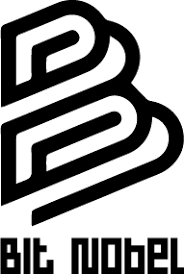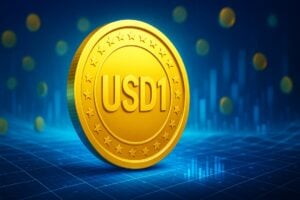In a constantly evolving cryptocurrency landscape, a new protagonist has quickly climbed the rankings: it is USD1, the US dollar stablecoin launched by World Liberty Financial (WLFI) and backed by President Donald Trump.
In just two months since its debut, USD1 has reached a market capitalization of over 2.2 billion dollars, becoming the seventh largest stablecoin in the world.
USD1: an explosive growth in a few weeks for the stablecoin supported by Trump
Launched at the beginning of March with an initial offering of just 3.5 million dollars, USD1 has experienced a meteoric rise.
According to the data from CoinGecko, the market capitalization of the stablecoin went from 128 million dollars to over 2.1 billion dollars in just two days at the end of April, marking an increase of 1,540%.
This sudden leap occurred a few days before the announcement of a $2 billion investment by the investment company MGX, based in Abu Dhabi.
Making the announcement even more significant was the fact that it was communicated by Eric Trump, thus emphasizing the direct link between the Trump family and the USD1 ecosystem.
One of the most relevant aspects of the stablecoin USD1 is its almost exclusive issuance on the BNB Chain, the blockchain supported by Binance.
According to the data from BscScan, over 99% of the total supply of USD1 — equivalent to about 2.1 billion dollars — has been issued on the BEP-20 network of BNB Chain.
On the contrary, the version based on Ethereum (ERC-20) represents only a small fraction, with a value of about 14.5 million dollars, according to Etherscan.
This technological choice has allowed USD1 to benefit from lower transaction fees and greater speed, characteristics that have likely contributed to its rapid adoption by users.
With its recent surge, USD1 has surpassed several established stablecoins such as First Digital USD, PayPal USD (PYUSD), and Tether Gold. Thus earning a spot among the top ten stablecoins by market capitalization.
However, it is still far from the giants of the sector like USDT by Tether and USDC, which boast 149 billion dollars and 61 billion dollars in capitalization, respectively.
Despite this, the speed with which USD1 reached the seventh global position demonstrates a significant growth potential. Especially if supported by further political and financial initiatives.
HTX among the first exchanges to list USD1
The rise of USD1 has not gone unnoticed in the world of exchanges. The first exchange to list the stablecoin was HTX, previously known as Huobi and closely linked to the founder of Tron, Justin Sun.
On May 6, HTX announced the listing of USD1 with zero-fee withdrawals on the BEP-20 network. Making it one of the few centralized exchanges to support the token.
Currently, USD1 is primarily available on decentralized exchanges like PancakeSwap and Uniswap. However, its presence on CEX like HTX could mark the beginning of a wider institutional adoption.
Another interesting element concerns the origin of investments in USD1 and WLFI.
According to a survey conducted by the founder of V1PS, Notaz.Sol, about 90% of WLFI investors come from non-U.S. jurisdictions. Among these are Europe, Asia, and Latin America.
A report by Bloomberg on May 7 also revealed that more than half of the main holders of Trump-branded memecoin reside outside the United States.
This data suggests a strong international interest in projects related to the Trump brand in the cryptocurrency sector. The rise of USD1 fits perfectly into the broader pro-stablecoin agenda promoted by Donald Trump.
In January, in fact, the president signed an executive order titled “Strengthening American Leadership in Digital Financial Technology.” This aims to consolidate the role of the United States in the cryptocurrency and stablecoin sector.
Although WLFI has often been associated with Binance, both Trump and the exchange platform have denied any direct link or formal agreement between the parties.
However, the choice to issue USD1 almost exclusively on BNB Chain has fueled speculation about a possible strategic collaboration.
The future of USD1
With a rapidly growing market capitalization, the support of leading political figures, and increasing adoption by exchanges and international investors, USD1 is establishing itself as an emerging force in the stablecoin market.
It remains to be seen if it will manage to bridge the gap with industry giants like USDT and USDC. However, the signals are clear: USD1 is set to play an increasingly central role in the cryptocurrency ecosystem.
Especially in a political and financial context that seems increasingly favorable to its expansion.







